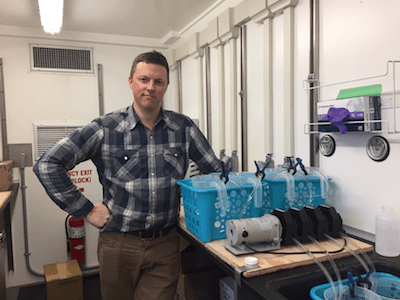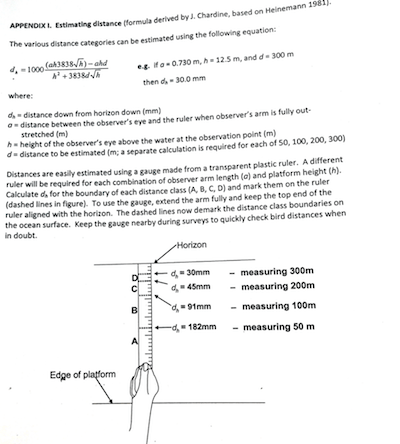By: Ailsa Barry, Canada C3 Researcher
The Science Team on board the Polar Prince jumped into action this morning, our first day at ‘sea’ and began two of the science research projects being undertaken on Canada C3. They are just two of 22 projects that will take place throughout the voyage and will give scientists new insights into Canada’s coastal environments.
Meredith Brown, our Chief Scientist on Leg 1 and Ottawa’s Riverkeeper, and Tom Pratt from the Department of Fisheries and Oceans took advantage of the calm water and good weather to collect water samples for the eDNA project that is being developed by University of British Columbia in collaboration with DFO, Dalhousie University, and Laval University. This ambitious project will take place on all legs of the voyage and will analyse the trace amounts of DNA that are shed by aquatic organisms into the surrounding water. Once analysed, this data will lay down important markers for the rapidly changing coastal biodiversity across Canada. It is made possible by relatively new genomic technology.
Tom and Meredith quickly got to grips with the amazingly well-kitted out labs which Roger Bull from the Canadian Museum of Nature has painstakingly put together. The container lab – generously loaned to the expedition from Dalhousie University – is called Canadensis, a pun on the fact it is made in Canada and looks like a giant square tin can as it made from a shipping container. The other lab is named Bowhead – due to the fact it is in the bow of the ship! The photos below show the beautiful labs as Roger left them. Let’s see what they look like in a week!

Roger Bull in the newly kitted out ‘Canadensis Lab’, a container lab
loaned to the Canada C3 Science team by Dalhousie University.

The Bowhead Lab.
Putting together their kit, Tom and Meredith set out in the zodiac towards Duck Island for the water sampling.

Tom and Meredith taking water samples.
Meanwhile I rounded up some fellow participants to start the Seabird and Marine Mammal survey being undertaken by Dalhousie University. This project will be observing animals on route ranging from birds to killer whales. As sadly our leg will have no large marine animals, we concentrated on setting up the bird team. This is a great citizen science project and we had three willing participants in Christie Hartlin, Debbie Muir and Johanne McInnis. The data that is collected will eventually be delivered to ebird.org and will give some insight into the changes occurring due to altered habitats and climate across Canada.

From left to right – Christie Hartlin, Debbie Muir and Johanne McInnis.
We quickly got to grips with the complicated instructions for calculating distance of the birds while standing at the bow of the ship.

How to calculate distance using the radius of the earth.
Luckily Johanne is a bit of a birder as her mother turns out to be a top birder back in New Brunswick and Johanne was soon pointing out the difference between Herring Gulls and Glaucous Gulls.
Unfortunately most of the birds we saw were Double Crested Cormorants – a nuisance species that is not only devouring fish but also killing trees with their poop. Rows and rows of them line the sandbanks.
Meanwhile Tom and Meredith returned and the real work of the day began as all the samples needed to be filtered to extract the DNA, labeled without contaminating them and put into the deep freeze. The protocol was quite time consuming and we were all thankful again for Roger’s amazingly well equipped labs.

Meredith at work filtering the sample.
Tomorrow we are heading for the Glenora Fisheries Research Station to find out about their program for conserving the American Eel.
